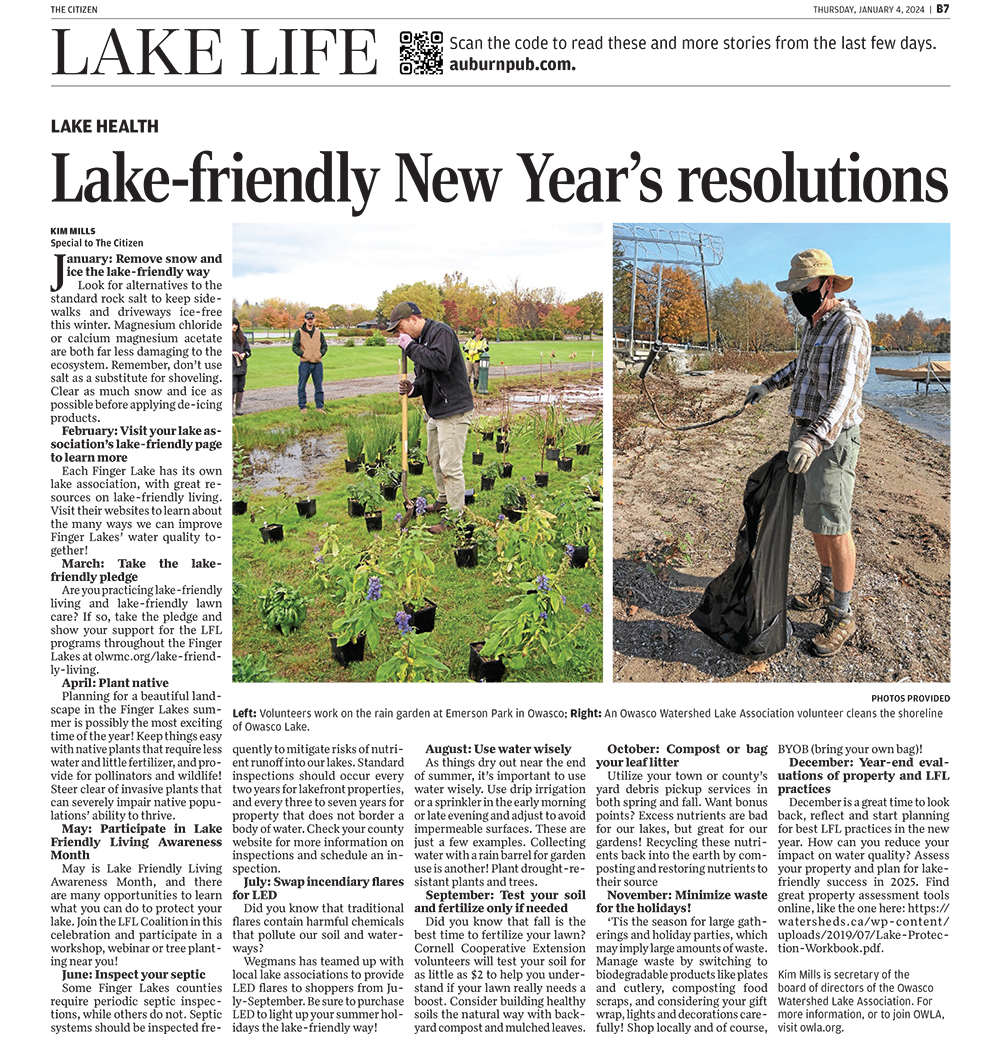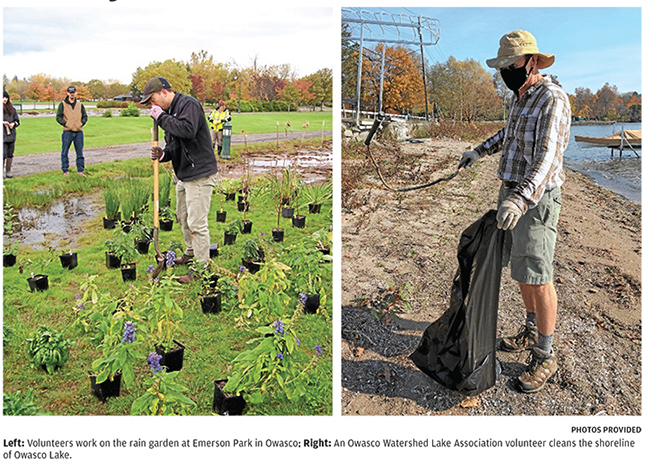KIM MILLS
Special to The Citizen
January: Remove snow and ice the lake-friendly way Look for alternatives to the standard rock salt to keep sidewalks and driveways ice-free this winter. Magnesium chloride or calcium magnesium acetate are both far less damaging to the ecosystem. Remember, don’t use salt as a substitute for shoveling. Clear as much snow and ice as possible before applying de-icing products.
February: Visit your lake association’s lake-friendly page to learn more Each Finger Lake has its own lake association, with great resources on lake-friendly living. Visit their websites to learn about the many ways we can improve Finger Lakes’ water quality together!
March: Take the lakefriendly pledge Are you practicing lake-friendly living and lake-friendly lawn care? If so, take the pledge and show your support for the LFL programs throughout the Finger Lakes at olwmc.org/lake-friendly-living.
April: Plant native Planning for a beautiful landscape in the Finger Lakes summer is possibly the most exciting time of the year! Keep things easy with native plants that require less water and little fertilizer, and provide for pollinators and wildlife! Steer clear of invasive plants that can severely impair native populations’ ability to thrive.
May: Participate in Lake Friendly Living Awareness Month May is Lake Friendly Living Awareness Month, and there are many opportunities to learn what you can do to protect your lake. Join the LFL Coalition in this celebration and participate in a workshop, webinar or tree planting near you!
June: Inspect your septic Some Finger Lakes counties require periodic septic inspections, while others do not. Septic systems should be inspected freLAKE HEALTH Lake-friendly New Year’s resolutions quently to mitigate risks of nutrient runoff into our lakes. Standard inspections should occur every two years for lakefront properties, and every three to seven years for property that does not border a body of water. Check your county website for more information on inspections and schedule an inspection.
July: Swap incendiary flares for LED Did you know that traditional flares contain harmful chemicals that pollute our soil and waterways? Wegmans has teamed up with local lake associations to provide LED flares to shoppers from July-September. Be sure to purchase LED to light up your summer holidays the lake-friendly way!
August: Use water wisely As things dry out near the end of summer, it’s important to use water wisely. Use drip irrigation or a sprinkler in the early morning or late evening and adjust to avoid impermeable surfaces. These are just a few examples. Collecting water with a rain barrel for garden use is another! Plant drought-resistant plants and trees.
September: Test your soil and fertilize only if needed Did you know that fall is the best time to fertilize your lawn? Cornell Cooperative Extension volunteers will test your soil for as little as $2 to help you understand if your lawn really needs a boost. Consider building healthy soils the natural way with backyard compost and mulched leaves.
October: Compost or bag your leaf litter Utilize your town or county’s yard debris pickup services in both spring and fall. Want bonus points? Excess nutrients are bad for our lakes, but great for our gardens! Recycling these nutrients back into the earth by composting and restoring nutrients to their source
November: Minimize waste for the holidays! ‘Tis the season for large gatherings and holiday parties, which may imply large amounts of waste. Manage waste by switching to biodegradable products like plates and cutlery, composting food scraps, and considering your gift wrap, lights and decorations carefully! Shop locally and of course, BYOB (bring your own bag)!
December: Year-end evaluations of property and LFL practices December is a great time to look back, reflect and start planning for best LFL practices in the new year. How can you reduce your impact on water quality? Assess your property and plan for lakefriendly success in 2025. Find great property assessment tools online, like the one here: https:// watersheds.ca/wp-content/ uploads/2019/07/Lake-Protection-Workbook.pdf.
Kim Mills is secretary of the board of directors of the Owasco Watershed Lake association. For more information, or to join OWLa, contact us at: .


Recent Comments